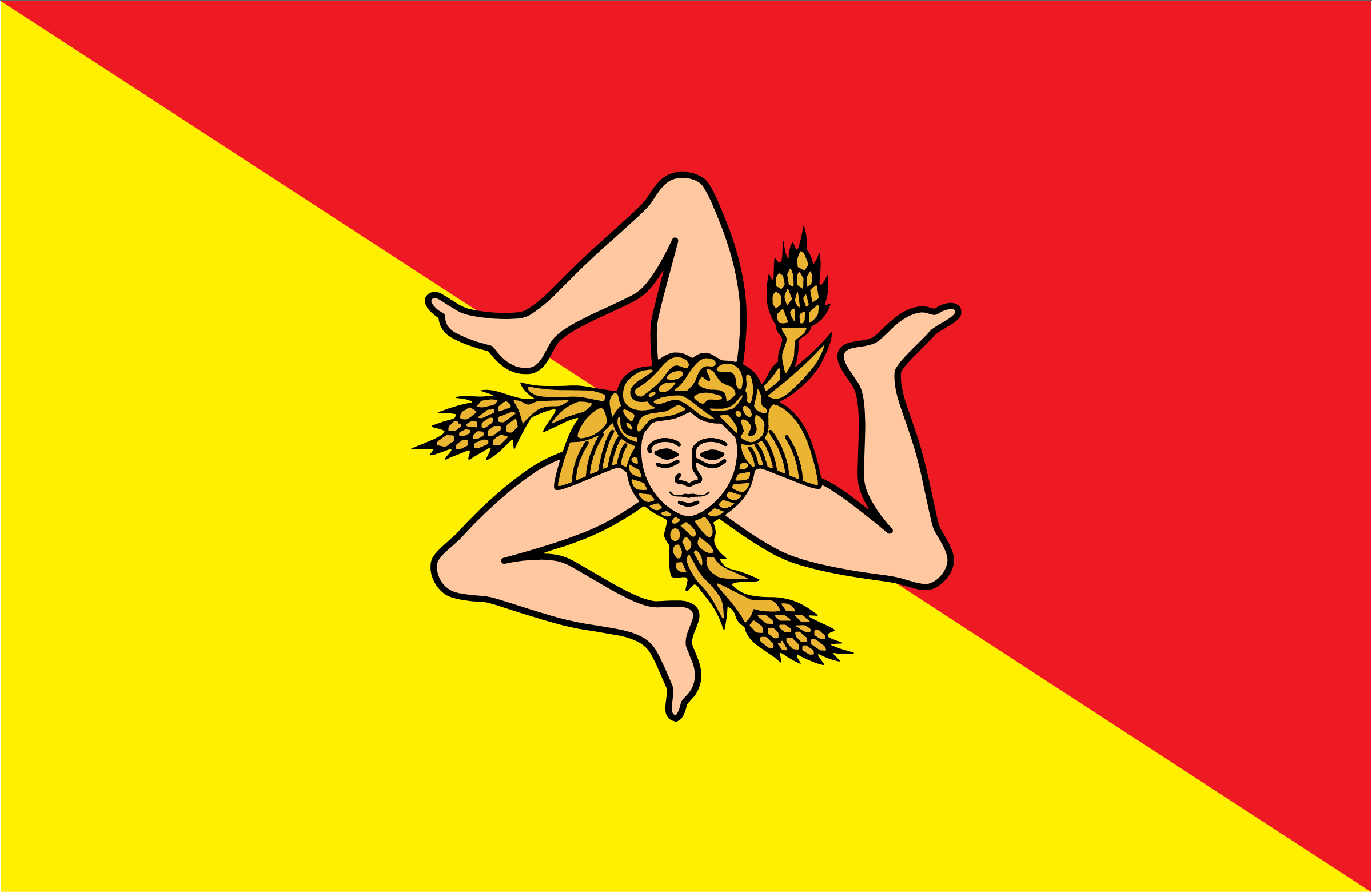You’re planning to visit Sicily and you come across multiple times a weird image of a woman’s head surrounded by three legs, with a lively half-yellow and half-red background. Now you’re wondering… “What is this about? What is the meaning of this image I’m seeing?”.
Well, you’re admiring nothing less than the… Sicilian flag!
The Sicilian flag, dating back at least until the Sicilian Vespers in 1282, is one of the most fascinating pieces of Sicilian history. In this article, you’ll find out everything you have to know about its history and meaning.
The Sicilian Flag: A Symbol of Identity
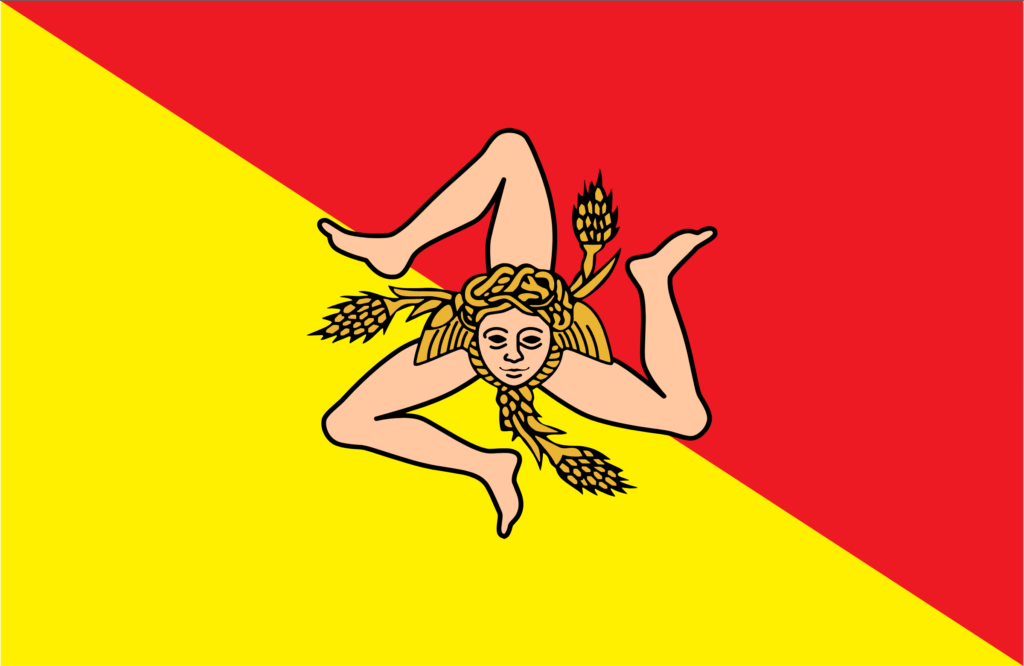
As already mentioned, the flag of Sicily features a decorated woman’s head on a red and yellow background. While this flag dates back to the 13th century, the history behind its symbol is much older.
The Colors and Their Significance
The two main colors, red and yellow, represent Palermo and Corleone, the two founding cities of the confederation against the Angevins. Historically, Corleone was one of the island’s most important agricultural centers.
Deciphering the Symbolism of the Trinacria
At the center of the Sicilian flag lies the Trinacria, the symbol that embodies the essence of Sicilian identity.
The term “Trinacria” derives from the Greek words for “three” and “cape,” a nod to the island’s distinctive triangular shape and the three prominent capes that adorn its coastline: Cape Pelorus in the northeast, Cape Passero in the southeast, and Cape Lilibeo in the west.
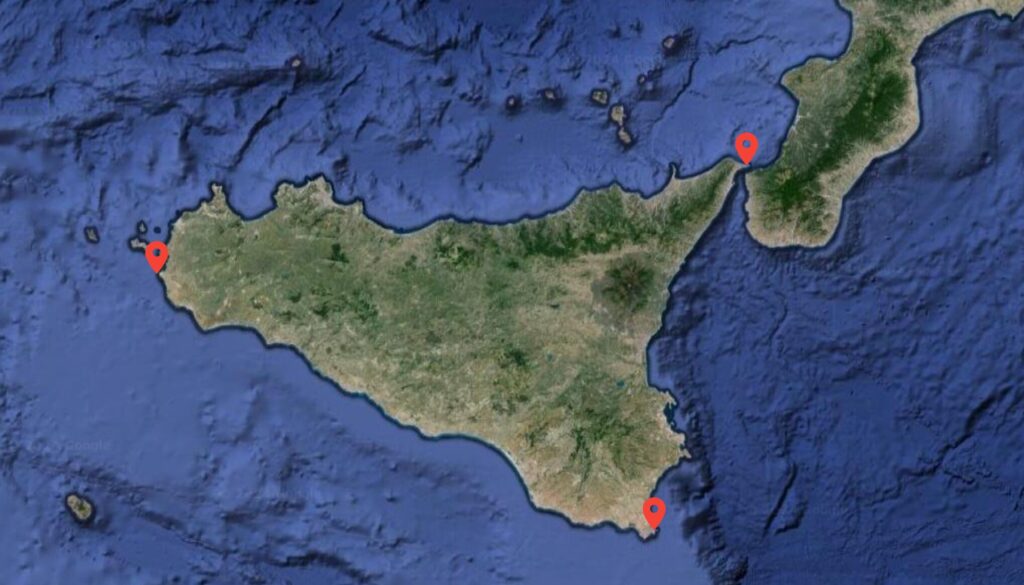
The three legs of the Trinacria, arranged in a spiral formation, are believed to represent the island’s three capes, symbolizing Sicily’s geographic diversity and its position as a crossroads of civilizations.
This motif, known as the triskelion, has its roots in ancient Greek and Roman iconography, where it was often associated with themes of motion and progress.
The Face of Medusa: Protection and Power
What about the woman head placed in the heart of the Sicilian flag?
The head depicted on the flag is Medusa’s, a renowned figure from Greek mythology. She was one of the three Gorgons: an ugly, winged monster with snakes instead of hair on her head, who turned anyone who looked into her eyes to stone.
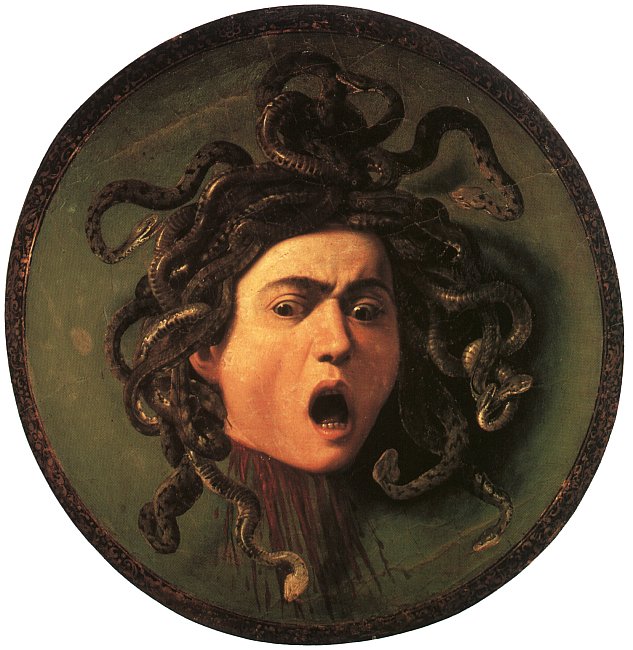
The head of Medusa, encircled by serpentine tendrils and crowned with a pair of wings, exudes an air of mystique and power, reflecting the resilience of the Sicilian people in the face of adversity.
Evolution of the Sicilian Flag: From Antiquity to the Present
During the Sicilian Vespers in 1282, the flag emerged as a potent symbol of resistance against foreign rule, as the people of Sicily rose up against their Angevin oppressors. Draped in red and yellow, the colors of respectively Palermo and Corleone, the flag became a rallying cry for independence, inspiring generations of Sicilians to fight for their rights and liberties.
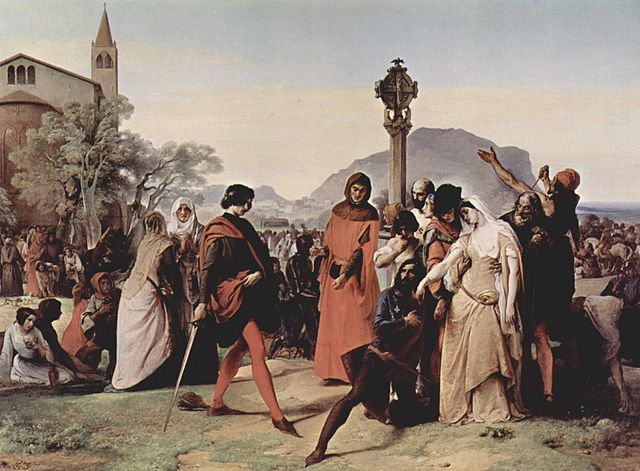
Embracing Tradition: The Significance of the Sicilian Flag Today
To this day, the Sicilian flag serves as a potent symbol of cultural pride and identity, thanks to its meaning deeply connected to Sicilian history and geography. Unfortunately, not everyone knows what’s behind this flag, despite being quite frequently adorning public buildings and waving at festivals and celebrations in Sicily: that’s the reason I wanted to publish this article so badly!
In my opinion, the Sicilian flag, with its ancient symbolism and appeal, serves as a powerful reminder of the resilience and strength of the Sicilian people, inspiring us to embrace our heritage and chart a course for the future.

